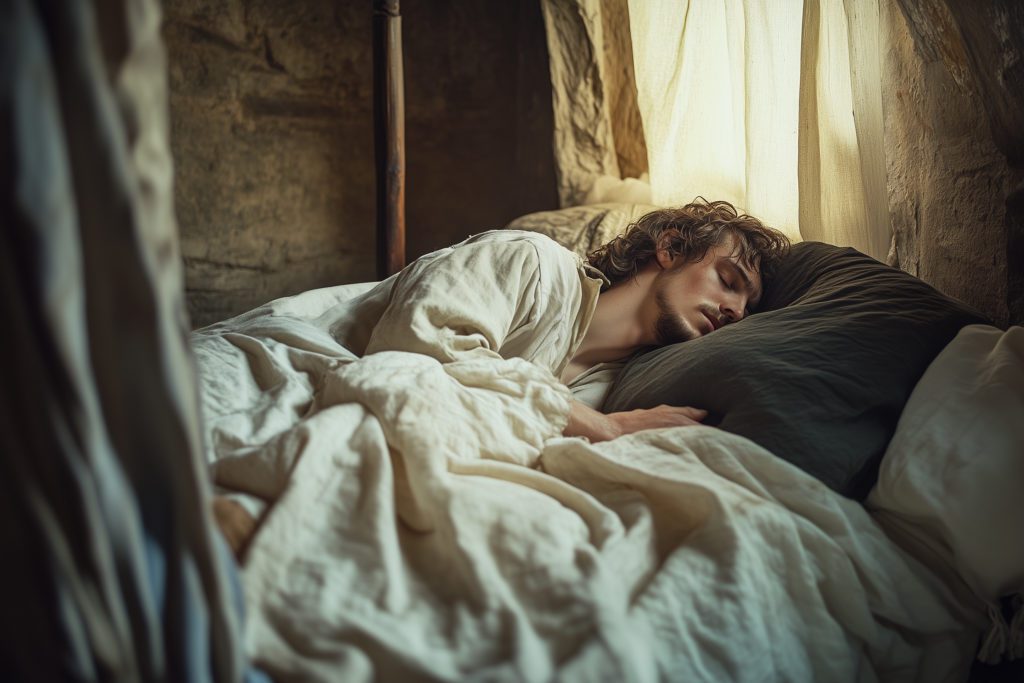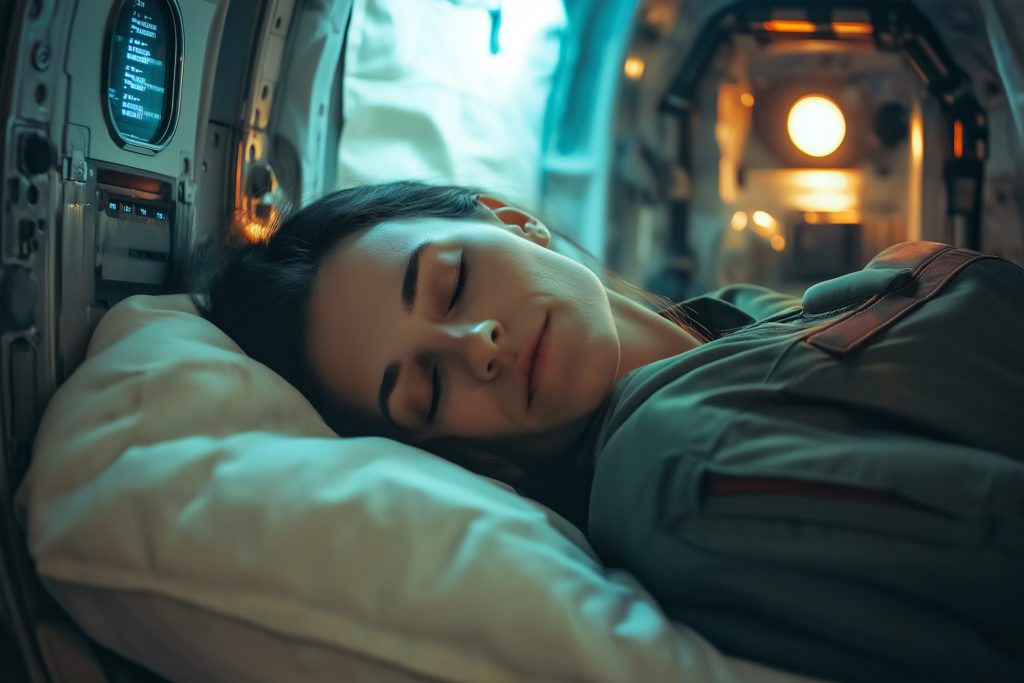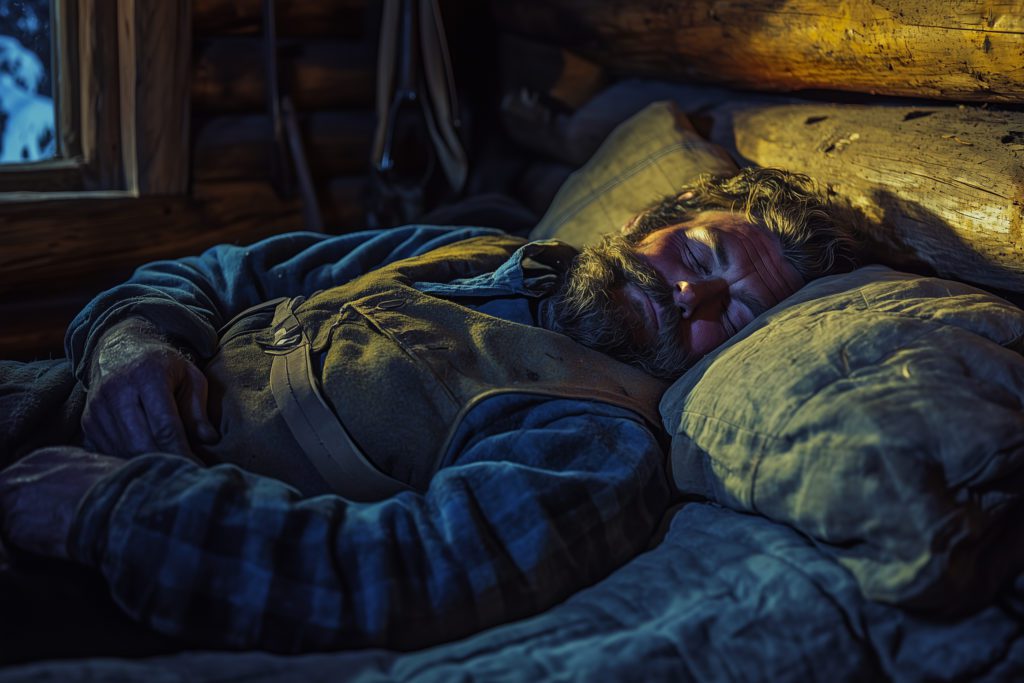
Historical Sleep Practices That Seem Strange Today
Explore odd historical sleep practices, from biphasic patterns to communal sleeping, showcasing how our nighttime routines have radically evolved today.

Just like our technology has evolved, so, too, has our sleep. Throughout the course of human history, how we rest and sleep at night has changed for a multitude of reasons. Sometimes, it was a matter of necessity. Other times, we had to adapt to the changes happening in society around us. Regardless, as you’ll come to find out—from odd sleeping arrangements to biphasic sleeping patterns—some of the historical sleep practices our ancestors once engaged in are strange to us today!
In this article, we’ll explore some of the most eccentric historical sleep practices and how they differ from how we rest today. Let’s start with a not-so-common sleep practice we used to engage in regularly as a society in pre-industrial Europe: biphasic or polyphasic sleeping patterns.
1. Biphasic and Polyphasic Sleep Patterns Led to Different Schedules
Biphasic or polyphasic sleep patterns are also known as segmented sleep. Instead of sleeping all night long, you might be surprised to find out that many of your ancestors used to sleep in two long sessions or multiple sessions throughout the day. Why, you might ask? In preindustrial Europe, it was common for people to sleep in segments because of the fact that natural light or the availability of things to do dictated when they slept (Source: PubMed).
This was not true for regions of the world near the equator, but for those where seasonal changes were more prevalent and natural light varied throughout the year, segmented sleep was common. People would sleep in multiple sessions, taking naps or going to rest after a meal or if there was nothing to do. It was also common for people to wake up in the middle of the night to grab a snack and then return to sleep. So, that late-night craving you get in the middle of the night isn’t just your need for sweets—it might just be a long-lost habit!
2. Communal Sleeping Was the Norm for Many Around the World
Did you know that up until the 19th century, it was actually common for us to share a bed with friends, colleagues, and total strangers? That’s right! Communal sleeping or co-sleeping was the norm for many centuries up until the luxury of having your own bed was considered an expected practice.
Just imagine traveling and stopping at an inn, only to be told that you’ll be sharing a bed with another traveler who is also on the way to his own destination. It seems odd now, but it was undoubtedly a common practice that was expected anywhere you went in the olden days: work, traveling, or even in your own community.
Fortunately for us now, we don’t have to worry about communal sleeping arrangements. “Social sleeping” may have been our history, but we can all agree that having access to our own bed and comforter alone or with a family member or partner is definitely cozier to us now!
3. The Use of Bed Warmers to Aid on Cold, Winter Nights
We all have heating and cooling in our homes today to help with the unpleasant evenings when we have to head to bed. However, just a few centuries ago, you would have to use something called a bed warmer. It’s exactly as it sounds: a tool that you prepare and then place under your sheets so that your bed is warm enough and you avoid getting too chilly at night.
In the 18th and 19th centuries, items like brass bed warmers were used to help keep us warm. Typically, what you’d do is take warmed stones, coals, or smoldering ashes from a fire and then fill the pan. Then, because of the holes in the lid, this would allow oxygen to feed the coals and keep them hot. All you had to do was place the bed warmer between the sheets and move it around so that your bed was cozy.
Bed warmers were a standard part of our sleeping practices, and some historians have even dated the apparatus’s use back to Queen Elizabeth I! It’s fascinating to think that we used to do this to stay warm. How lucky are we to have the ability to keep ourselves warm with the touch of a button on our thermostat now!
4. Nightcaps and Head Coverings to Protect You from Disease
Aside from bed warmers, the days before electricity and heating systems also necessitated other means of keeping ourselves warm, like with head coverings or nightcaps. You might have heard of nightcaps before, but we’re not talking about the alcoholic drink! The nightcaps that we’re referring to are head coverings or thick hats that were meant to protect you from the cold nights that could get you sick.
The nobility was likely to have ornate nightcaps, but everyone also used less decadent versions. Getting bundled up to go to bed was the norm when going to bed on a cold night could have injured you or, worse, led you to get something dreadful like pneumonia. While it might not be as strange as some of the other practices we’ve explored, it’s hard not to imagine the looks we might get if we bundled up the same before bed today.
Compared To Today, History’s Sleep Practices Were Different
It’s hard to find anyone who sleeps in segmented sessions or those who use bed warmers, but it’s fascinating to think how far we have come. Back in medieval times, it might have been normal to hop into bed with a stranger also traveling just like you, but today, we’re fortunate to have more space and ample room in our own beds to rest and recover all in one sleeping session overnight.
We hope that you learned something new from this article! When it comes to other historical sleeping practices you might have heard of, what’s the strangest ritual you know of?
FAQ
Were people in the past just as tired as we are today?
Surprisingly, people in the past might not have experienced the same kind of exhaustion we do today. Without artificial lighting and 24/7 connectivity, they often had more natural sleep rhythms. However, manual labor, poor bedding, and inconsistent sleeping conditions likely made sleep less comfortable.
How did people wake up on time without alarm clocks?
People relied on natural light, roosters crowing, church bells, or even human "knocker-uppers" who would tap on windows with sticks to wake workers up. Some wealthier individuals had mechanical clocks, but most people just woke up when the world around them did.
Would historical sleeping habits help me if I’m a night owl?
Possibly! If you naturally wake up in the middle of the night, embracing biphasic sleep could work better for you than forcing yourself into a strict 8-hour block. Some people even report feeling more refreshed when they allow themselves to wake for a bit before going back to sleep.
Did people nap more in the past than we do now?
Yes! Before rigid work schedules, naps were common. Many cultures embraced midday rest, and even in the Western world, quick naps were normal. Today, we often feel guilty about napping, but history suggests it was once a natural part of daily life.
What did people do if they snored?
Snoring has always been a problem! Some medieval remedies included sleeping with a certain posture, using herbal concoctions, or even wearing special devices. If you were a loud snorer in a communal sleeping arrangement, though, you probably just annoyed everyone around you!

Written by
Marie Soukup
Marie Soukup is a seasoned copywriter, editor, and Integrative Nutrition Health Coach with a certificate from the Institute of Integrative Nutrition (IIN). With years of experience working with brands across diverse industries, Marie is passionate about holistic health and crafting compelling content.
Download Pillow
Get help
Press & News
Legal
Connect
X (Twitter)
Company
Copyright © Neybox Digital Ltd.



